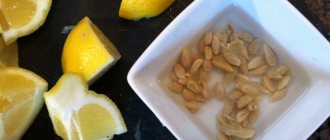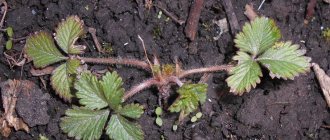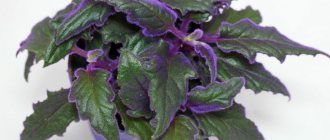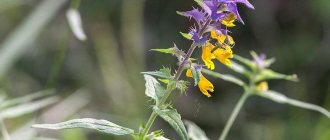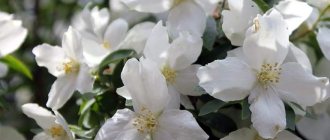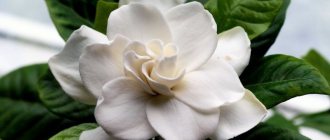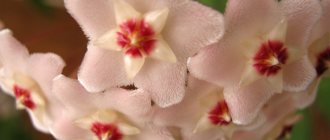True jasmine shrub is an evergreen heat-loving plant. In temperate latitudes it is used for growing indoors and is rightfully considered a decoration for the winter garden.
Indoor jasmine is an evergreen flower with an amazing aroma
At dachas in the Moscow region, the Urals, and Siberia, mock orange is grown, which is also often sold under the name “jasmine.” This is the name given to the deciduous shrub for the similarity of its aroma to a southern flower.
“Garden jasmine” tolerates our cold winters well and is found in many front gardens in Central Russia
Symbolism of Jasmine
The noble white color and delicate aroma have been valued by people since ancient times. They associated them with nobility, grace and benevolence.
Thus, in Christianity, jasmine is considered the flower of the Virgin Mary. In China, Thailand and Indonesia, jasmine symbolizes femininity and purity.
Indonesians call it “melati” and actively use it, for example, at wedding ceremonies. Among the Tatars, jasmine is considered a sacred plant - to get to heaven, a person must grow jasmine.
Diseases and pests
Jasmine, like many ornamental plants, is susceptible to damage from diseases and pests.
Dangerous for this plant:
- Aphid.
- Mealybug.
- Spider mite.
- Shield.
- Thrips.
- Whitefly.
- Leaf weevil.
To combat pests, you need to regularly inspect the plant. If pests are detected, insecticides should be used, otherwise the plant will simply disappear. Affected areas are removed and burned.
Medicinal jasmine
According to recent studies, the aroma of jasmine affects the nervous system, promoting the production of encephalins, resulting in a relaxed state.
So it helps with insomnia and acts as an antidepressant. Jasmine essential oil is an effective care product for dry, oily and sensitive skin. It improves blood circulation, helps with diseases of the respiratory, genitourinary and endocrine systems.
In addition, jasmine has proven itself in the treatment of headaches, liver diseases, and rheumatism.
Jasmine in landscape design
Fragrant and easy to trim, jasmine is indispensable as a hedge. Low-growing varieties are successfully integrated into rockeries, alpine hills and ridges. Jasmine also looks great near bodies of water, reflecting picturesquely in the water.
Hydrangea and spirea go well with jasmine. Climbing plants with garden jasmine combine clematis, actinidia, and climbing roses.
What harm can it cause
Aphids cause enormous damage to cultivated plants:
- Pests suck nutrient fluid from crops. The plants are gradually withering.
- Leaves and shoots are deformed.
- Insects provoke the spread of fungal diseases.
- Plants gradually weaken, do not tolerate cold well and often die.
- The yield of affected crops is reduced or absent altogether.
The general condition of plants affected by aphids deteriorates significantly.
Jasmine Chubushnik
Looking at the photo of jasmine, many call it mock orange, and vice versa. At the same time, all that unites the plants is white flowers and a honey aroma.
Let's see how these cultures differ:
- mock orange has harder wood, the stem of jasmine is flexible and soft;
- mock orange bark is gray or brown, jasmine bark is green;
- mock orange flowers are collected in racemes, jasmine flowers are collected in corymboses;
- a mock orange flower looks like a goblet, a jasmine flower looks like a tubular corolla with two stamens;
- The flowering period of mock orange is about 20 days, while jasmine blooms from 60 to 90 days;
- mock orange is winter-hardy, jasmine is heat-loving;
- After flowering, mock orange has a box of seeds in place of the flower, and jasmine has a berry.
Main varieties
Many gardeners, wanting to grow this plant, cannot choose a variety. Each species is distinguished by its elegance and flowering. The most popular are small-leaved, crown and fluffy jasmine.
small-leaved
A compact shrub that rarely reaches a height of more than a meter. The large leaf blades of this plant have a curved shape, and the flowers emit a pleasant, subtle scent that some people think resembles strawberries.
Common coronary
This variety stands out for its size, growing up to 2.5-3 meters. During flowering, the jasmine bush is decorated with large snow-white inflorescences, which have a delicate sweetish aroma. But the leaves are painted a bright golden color.
Fluffy
This is a record holder among varieties, as it sometimes reaches a height of 4 meters. Experienced gardeners and landscape designers advise growing fluffy jasmine in parks or spacious areas. However, its peculiarity is considered to be the complete absence of aroma in its flowers. This species blooms quite late, and this period lasts only 4 weeks.
Jasmine in the garden
Garden jasmine is a shrub reaching 3 m in height and 2 m in crown diameter. Take this into account when planting and, based on the type of jasmine, select suitable “neighbors”.
When growing in the middle zone, choose frost-resistant types of jasmine. But remember that young seedlings in any case need winter shelter.
After transplantation, the bush requires quite a long adaptation; it usually blooms in the second or third year.
Life hack 3 - Get rid of gray rot with garlic solution and potassium permanganate
Potassium permanganate solution
The disease manifests itself by the appearance of spots on the leaf plate and stem, which subsequently forms a gray fluffy coating.
From personal experience, I recommend using a solution of potassium permanganate. Crystals of the substance dissolve in warm water, and the resulting liquid is watered on the diseased bush.
I make another good product based on garlic. You need to chop five or six cloves of garlic and add two liters of water.
Leave the infusion to cook for seven days. Spray the plant with the prepared mixture.
Spraying the bush with Bordeaux mixture also helps get rid of this disease. All affected parts of the plant are removed. But this method can only be performed in late autumn or early spring and if traditional methods do not produce results.
How to choose a place for jasmine?
Do you want your jasmine to bloom?
Then make sure that the jasmine grows in the most comfortable place for it. Firstly, the place for permanent planting should be sunny. Secondly, the site must be dry, without stagnant groundwater. Thirdly, it is better to avoid areas where there are strong winds and drafts.
Important: most varieties of jasmine love the sun, but some tolerate shade and partial shade, so when buying seedlings, be careful not to make a mistake. Match the jasmine planting location with its variety.
Lifehack 5 Proven remedies against black and bean-euonymous aphids
Aphids reproduce very quickly, so fighting them is difficult and lengthy. But if you don’t get rid of this pest, there will be nothing left of your bush.
Aphid
I tried many methods, I will share the best:
- Soap solution. For ten liters of water I took three hundred grams of laundry soap. If you don’t have a household dishwasher, you can use liquid soap or tar. In this case, it is enough to take one hundred twenty-five milliliters for ten liters of water, one hundred grams of tar.
- Ash with soap. For a bucket of water I take 40 grams of soap and two hundred and fifty grams of ash. I boil the product for thirty minutes. I spray or wash each leaf, but it takes a lot of time.
- Onion solution. To prepare, you can take onion peels or chop thirty-five grams of onion per liter of water. Leave to brew for five hours. Then put five grams of soap into the raw material, carefully move and strain. Add water to the original volume (1 liter).
- Garlic solution. Dilute two hundred grams of the product with one liter of water. Cover with a lid and leave to cook for a couple of days. Then I dissolve twenty-five milligrams of the finished raw material in a bucket of water and spray it.
- Tobacco remedy. I grind two hundred grams of dry tobacco leaves, add five liters of water and leave for two days. After it’s ready, I add another five liters of water and filter. I spray early in the morning.
- Chamomile solution. One hundred grams of dry raw materials per liter of water. Leave the solution for twelve hours. Before processing the bush, I dilute the prepared solution with water in a ratio of 1 to 3. You can add a couple of grams of laundry soap.
- Citrus infusion. Take one hundred grams of any citrus peels and add three liters of water. Infuse for three days. Use immediately when ready.
- Potato solution. One kilogram of healthy potato tops is infused for three hours in ten liters of water. If the tops are dry, then six hundred grams.
How to plant garden jasmine correctly?
Jasmine planting:
- dig up the top layer of soil;
- dig a hole with a depth of at least 50 cm and a diameter of at least 60 cm;
- loosen the bottom, if necessary, add drainage from crushed stone and sand;
- when planting in spring, add 50 g of nitrophosphate to the hole;
- after planting, compact the soil a little and water the plant generously;
- To preserve moisture, sprinkle the tree trunk circle with peat, humus or pine needles.
Experts recommend planting jasmine in the spring or, if you don’t have time, in the fall.
Choosing the optimal site for planting
Fluffy, crown or small-leaved jasmine can often be found in country gardens and cottages. In prevailing cases, jasmine is planted in the spring season, regardless of which subspecies has been chosen at the moment.
For healthy growth and formation of the plant, you should familiarize yourself with the main rules for planting and maintaining it:
- For rich flowering and impressive appearance, jasmine should be planted in a place protected from drafts, as they adversely affect the growth of this shrub. For jasmine, a well-lit place with plenty of direct sunlight will be more suitable.
- This shrub is best planted among flowers that are lilac or bright blue. For example, next to lavender or spur, jasmine will look very harmonious.
- Experts advise planting in the spring, however, this process can be done in the fall.
How to care for garden jasmine?
Jasmine care:
- adjusting watering (do not over-moisten the soil, but at the same time ensure abundant watering in hot weather);
- loosening the soil in the root circle;
- removing faded flowers;
- spring feeding with a mineral complex of nitroammophoska or mullein infusion;
- after flowering - fertilize with wood ash or superphosphate;
- pruning, pinching and thinning;
- in case of infection with aphids or spider mites, treat with an intexicide.
What you need to know about homemade jasmine
Homemade jasmine is quite capricious and whimsical, so if you want the plant to feel comfortable at home, you will have to take into account a large number of factors.
Be careful! Due to the high concentration of essential oils, the smell can sometimes cause headaches, especially in small spaces.
Areas of use
Jasmine flowers contain a huge amount of essential oils that have bactericidal properties. Thanks to their unique composition and persistent pleasant aroma, the inflorescences are used in perfumery, cosmetology, and medicine:
- The active substances in jasmine flowers stimulate the immune system, enhancing the immune response.
- Tea made from jasmine inflorescences enhances gastrointestinal motility, binds toxins and promotes their rapid elimination from the body.
- Flowers are also used locally for contaminated wounds. The antiseptic effect of jasmine blocks the breathing, growth and reproduction of microorganisms.
The stimulating effect is widely used in gynecological practice, for the prevention and treatment of a number of female diseases. Knowledge of the medicinal properties and contraindications for the use of jasmine flowers will allow you to most optimally use the plant for practical purposes.
Subtropics at home
Jasmine comes from the subtropics, which means it loves light, warmth and humidity. The best place in the house for it would be a bright, spacious room. At the same time, you should avoid direct sunlight and artificial lighting.
The temperature in the room where home jasmine is located must be maintained at 18-24˚C. At the same time, it is important to ensure high humidity and absence of drafts. It is recommended to spray the crop regularly.
Jasmine does not tolerate lime very well, so for quality care of jasmine, take care of the quality of the water. Warm rainwater, boiled or filtered water is ideal. Let the water sit before watering.
Life hack 6 Hawthorn - fighting the pest with yarrow tincture
Yarrow tincture
The caterpillar eats leaves, buds and buds. Experts recommend collecting butterfly pupae by hand. The procedure should be performed in the evening, when the sun has set, or in the morning, while the hawthorn is still sleeping.
I recommend another method. I prepare a tincture of yarrow, tomato tops or wormwood. For ten liters of water I take one hundred grams of dry raw materials. I leave it for two days to infuse. In the evening I spray.
You can take the chemical drug "Lepidocid". Treatment is carried out every ten days until the bush is completely cured.
Seasonal care for indoor jasmine
Indoor jasmine is sensitive to changing weather conditions, and therefore requires different care in the summer and winter seasons. The plant does not tolerate dry soil and air, so during dry and hot periods it requires abundant watering and spraying.
In winter, humidification should be reduced and commensurate with the room temperature. It is important to maintain light moisture in the substrate, allowing the middle layer of soil in the pot to dry.
How to maintain indoor jasmine
Home jasmine prefers acidic soil. Support the plant with mineral and potassium fertilizers, especially from mid-spring to late summer, as at this time the plant is actively gaining weight.
It is advisable to replant a young plant once a year, and an adult plant once every 3 years. In this case, be sure to use drainage and ready-made soil mixtures.
Shrub propagation methods
Garden jasmine is propagated in several ways. The plant itself can withstand transplantation well and quickly takes root without the use of special preparations. Every gardener should know how to plant jasmine.
Propagation by seeds
Domestic and wild plants practically do not reproduce by seeds. If you propagate a flower in this way, it will bloom only after 5-7 years.
Seeds are planted in autumn or spring. In the cold season, it is necessary to cover the soil with branches or dry grass. It is generally better to do sowing in a greenhouse.
The seeds are pre-prepared and treated in Epin solution. The seedlings are mixed with sand and sent into small holes, covered with peat on top. The plant will sprout after a few weeks.
When the seedlings form their root system, they can be sent into open ground for further growth.
By cuttings
The cutting must be summer, curving and green. The length of the cutting should be 10 cm.
An even incision is made above the upper bud, and an oblique cut is made above the lower bud. The leaves from below must be removed, and the top ones must be shortened by half. The cuttings are first kept in a solution of a root formation stimulator for 20 hours.
There should be a few buds left above the soil level.
The plant is planted in a greenhouse, placed in a mixture of peat and sand. Spraying is necessary for the first 2 weeks.
Attention! In extreme heat, the greenhouse with cuttings is ventilated and protected from sunlight.
After a few weeks, the seedlings form roots and become accustomed to their environment. The young bush is transplanted into open ground in the spring.
Dividing the root system
Reproduction is rarely carried out in this way. This is due to the fact that gardeners practically do not replant adult plants, and there is no point in dividing a young bush.
If this method is nevertheless chosen, it is important to ensure that all parts have a well-developed root system.
Note! All cut areas must be treated with garden varnish to prevent infection.
Reproduction by layering
For propagation by layering, young annual shoots are used, which are located in the lower part of the plant.
In the spring, they are bent to the soil and secured with a wire bracket. Sprinkle peat-sand mixture on top. From mid-July, new shoots grow on the cuttings. They should be covered with earth before autumn.
At the beginning of October, it is necessary to pull the cuttings out of the ground and cut them off from the mother plant. The finished seedling is placed in a separate place. In winter the bush is covered.
Photo of jasmine
Total
Category: Flower beds and flower beds
Volumetric buds
Lovers of large and impressive sizes will appreciate garden jasmine, which has beautiful and lush flowers. In addition, the stem of this specimen can reach 10 meters in length, which will be of interest to owners who have large flower beds and greenhouses.
With the help of one stem you can fill a good space in a flowerbed, and using your imagination you can weave entire masterpieces from it. The green mass is quite beautiful, this is due to the pinnateness of the leaves located opposite each other.
The shape of each specimen has an elliptical appearance and a dark color, which significantly distinguishes this variety. When they bloom, the flowers resemble umbrellas and are quite large in size; 10 beautiful buds can form on one top.
